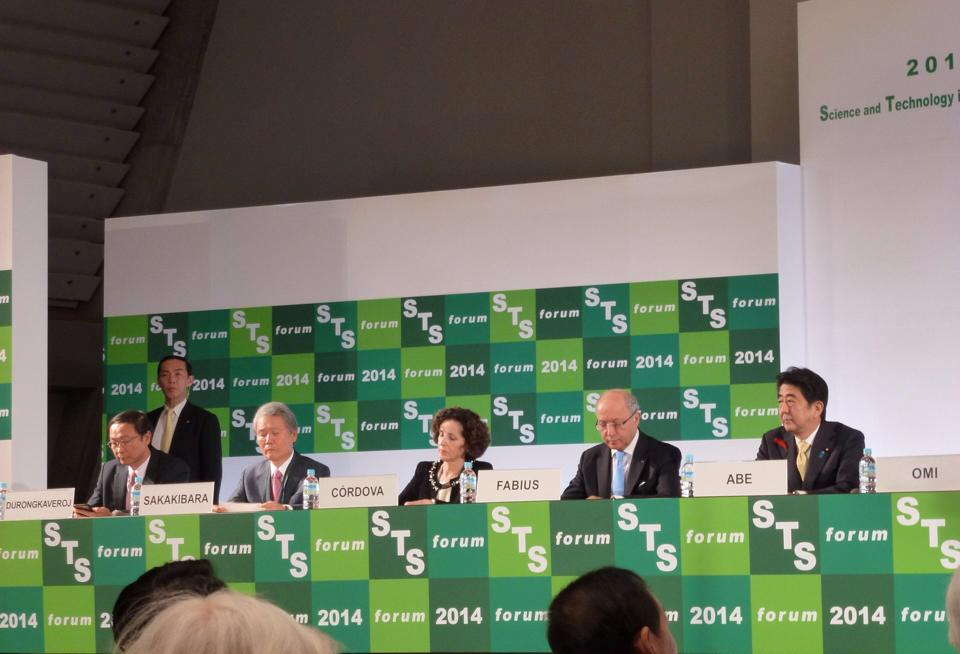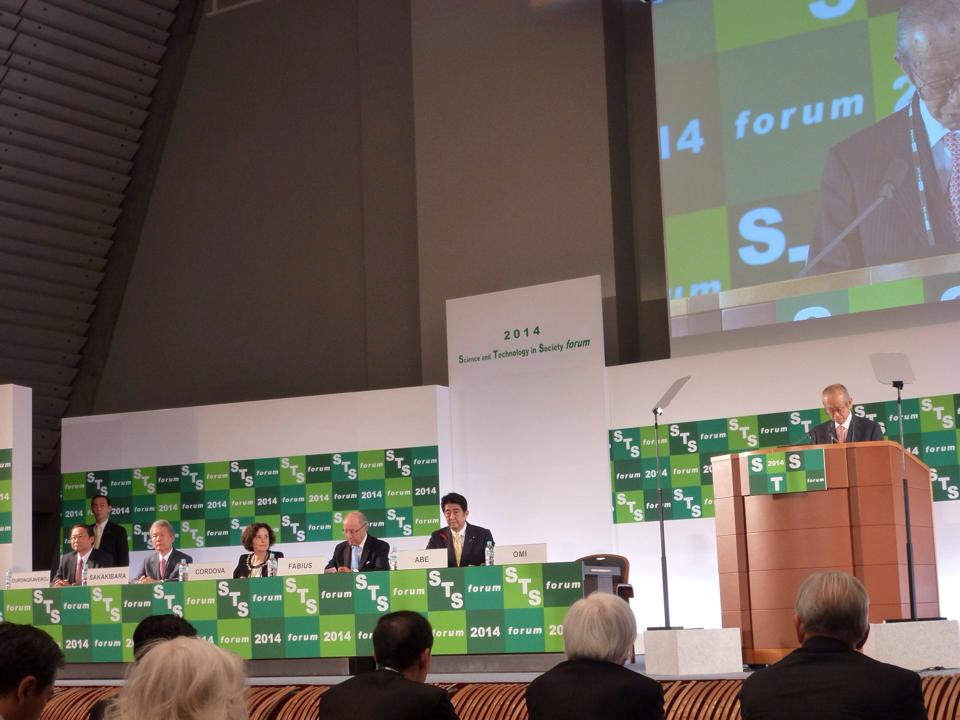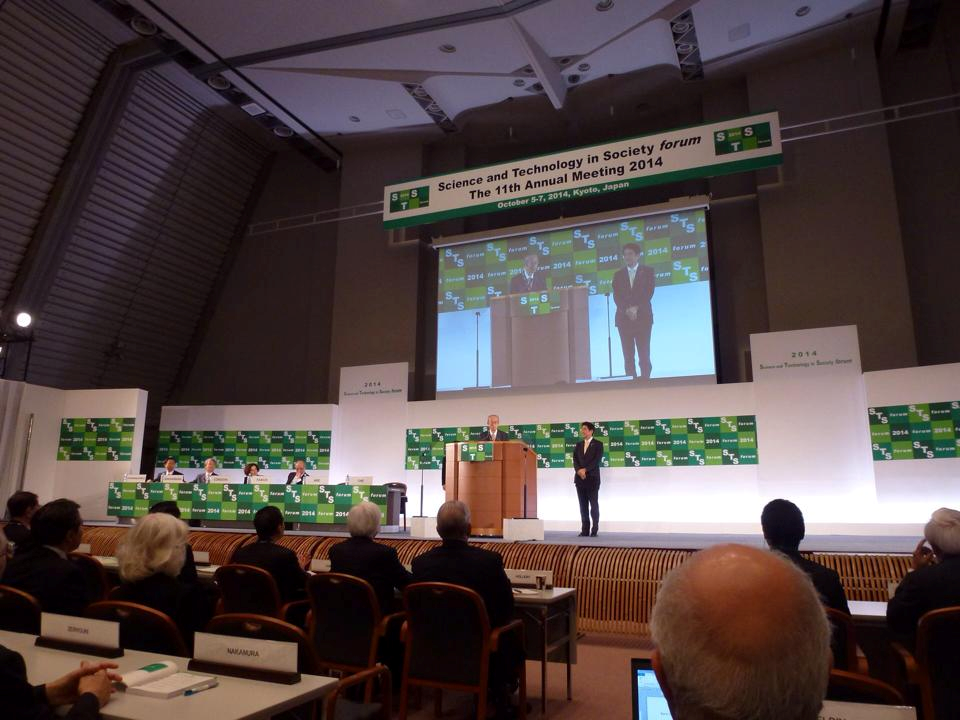An Address by Dr. Pichet Durongkaveroj Minister of Science and Technology of Thailand Delivered at the Opening Plenary Session of the 11th Annual Meeting of the STS forum
An Address by Dr. Pichet Durongkaveroj
Minister of Science and Technology of Thailand
Delivered at the Opening Plenary Session of the 11th Annual Meeting of the STS forum
October 5, 2014
Kyoto, Japan
Panelists :
• Koji Omi, Founder and Chairman, Science and Technology in Society (STS) forum, JAPAN
• Shinzo Abe, Prime Minister, Government of Japan, JAPAN
• France A. Córdova, Director, National Science Foundation (NSF), U.S.A.
• Pichet Durongkaveroj, Minister of Science and Technology, THAILAND
• Laurent Fabius, Minister of Foreign Affairs and International Development, FRANCE
• Sadayuki Sakakibara, Chairman, Toray Industries, Inc. and Nippon Keidanren, JAPAN
Your Excellency Mr. Prime Minister,
Chairman Koji Omi,
Distinguished participants,
Ladies and Gentlemen,
My sincere appreciation to Omi-san and the STS organizing committee for inviting me to speak at this important meeting. The fact that STS forum has been running strong into its 11th year or 2nd decade confirms my belief that science and technology has been one of the most important drivers of the advancement and progress of human society—shining light and casting shadow upon us.
Like other members of the international community, we face global challenges and our own local problems that must be urgently and successfully addressed. We need to foster international partnership, share what we have with others, and contribute to global efforts in solving global challenges. For our part, we have been reasonably successful in research and development that leads to innovations that benefit humankind. To cite a few notable examples, our scientists with their priority on tropical diseases, have successfully developed an anti-malarial drug to overcome multi-drug resistant malaria and a dengue fever vaccine and diagnostic kits. To adapt to climate change, another group of biotechnologists has developed flood-tolerant rice varieties that directly benefit farmers in the flood-prone areas of Thailand’s central plain. Another team of information technologists has developed telemetry systems appropriate to community-based water management in rural areas affected by climate change-induced floods and droughts. Researchers and innovators can share and collaborate with one another in complete openness and transparency.
Ladies and Gentlemen, science and technology cannot stay idle when society is going through major transformation—something we have recently witnessed and learned important lessons. It tells us that a rational society needs scientific thinking. It tells us that an efficient administrative system also needs transparency for which technology solutions can play a part of. It also tells us that science and technology should not be confined to scientists and engineers or a single institution, like the Ministry of Science and Technology, but inter-ministerial, public-private partnerships, outreach to citizens, and certainly to humankind through international collaborations.
These past few weeks have seen our country emerge under the stewardship of a new administration that puts science and technology at the heart of its policy. In his policy statement delivered to the National Legislative Assembly, Prime Minister Prayuth Chan-ocha stressed his government’s priorities to utilize science, technology and innovation through reform of key strategic policies and transparency of implementations. Apart from providing investors with stability and predictability, we expect that through good governance and hard work, we will lift the country out of the middle income trap in a longer term.
From a developing and emerging economy’s standpoint, let me use the 5-point plan of our science, technology and innovation policy as an example of the need to set targets and strategies. First of all, the target increase in research and development to 1% of GDP for which the government would facilitate the private investment in research facilities and research centers, including the support for small and medium enterprises. Second, the manpower development will be top priority utilizing innovative measures such as STEM education, STEM workforce, work integrated learning for vocational and higher education, and talent mobility from public universities and research institutes to the industrial and business sectors. Third, technology transfer and local technology content will be in support of the investment in mega projects such as rail system, water management system, and energy projects especially clean energy. Fourth, facilitation and incentives provided to encourage private investment in research, commercialization and collaboration with universities and public research institutes. Last but not least, investment and co-investment in modern science and technology infrastructure will be promoted in pilot plants, centers of excellence, testing facilities, as well as public and private science and innovation parks.
Ladies and Gentlemen, the future of humankind indeed rests upon us. The local example that I have raised signifies the fact that policy continuity that copes with multiple dynamisms, strategic investment and budgeting and public-private partnership are foundations to sustainable development and a better future for the next generations to come.
Thank you for your attention.













